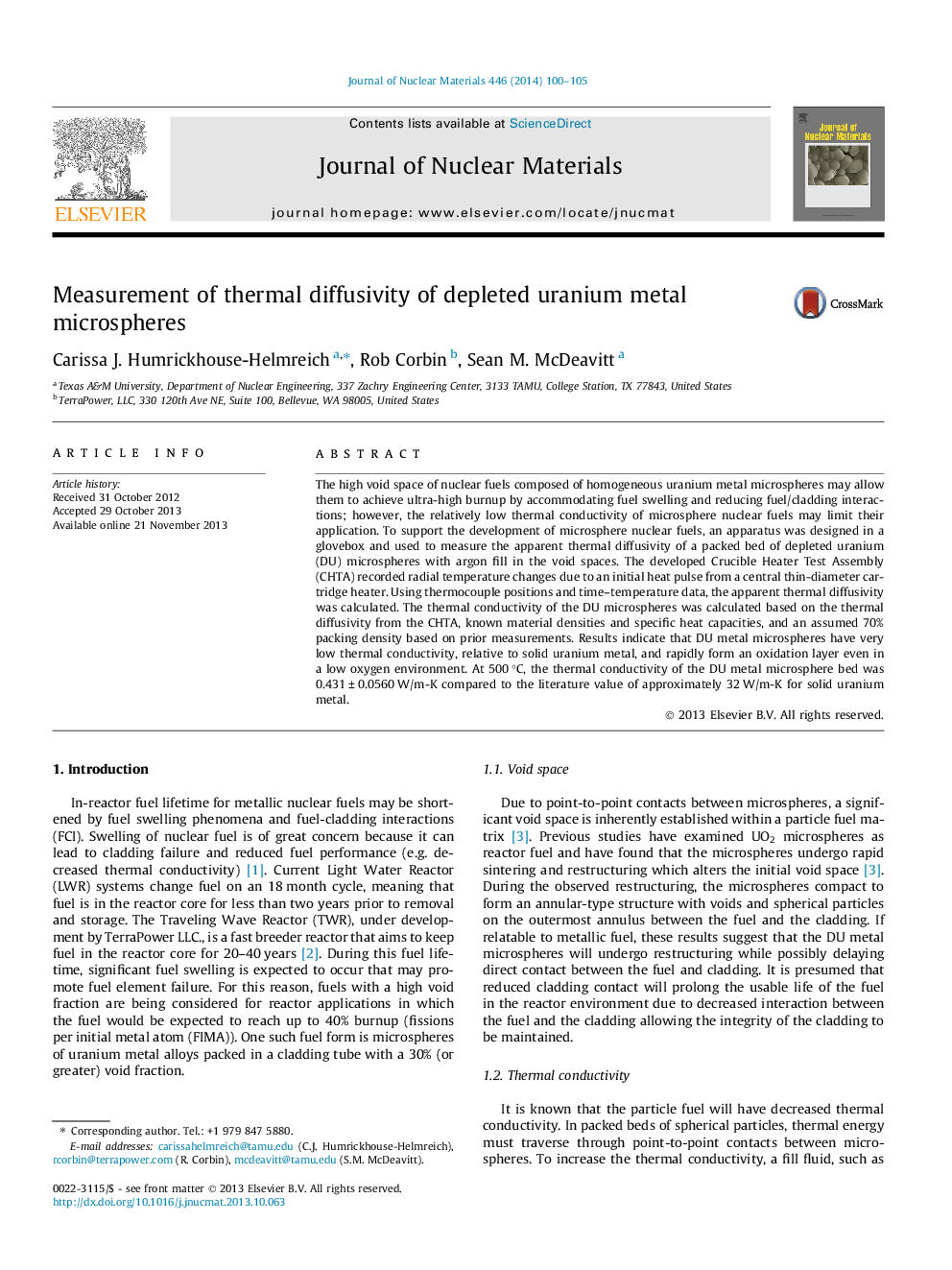| Article ID | Journal | Published Year | Pages | File Type |
|---|---|---|---|---|
| 1565318 | Journal of Nuclear Materials | 2014 | 6 Pages |
The high void space of nuclear fuels composed of homogeneous uranium metal microspheres may allow them to achieve ultra-high burnup by accommodating fuel swelling and reducing fuel/cladding interactions; however, the relatively low thermal conductivity of microsphere nuclear fuels may limit their application. To support the development of microsphere nuclear fuels, an apparatus was designed in a glovebox and used to measure the apparent thermal diffusivity of a packed bed of depleted uranium (DU) microspheres with argon fill in the void spaces. The developed Crucible Heater Test Assembly (CHTA) recorded radial temperature changes due to an initial heat pulse from a central thin-diameter cartridge heater. Using thermocouple positions and time–temperature data, the apparent thermal diffusivity was calculated. The thermal conductivity of the DU microspheres was calculated based on the thermal diffusivity from the CHTA, known material densities and specific heat capacities, and an assumed 70% packing density based on prior measurements. Results indicate that DU metal microspheres have very low thermal conductivity, relative to solid uranium metal, and rapidly form an oxidation layer even in a low oxygen environment. At 500 °C, the thermal conductivity of the DU metal microsphere bed was 0.431 ± 0.0560 W/m-K compared to the literature value of approximately 32 W/m-K for solid uranium metal.
